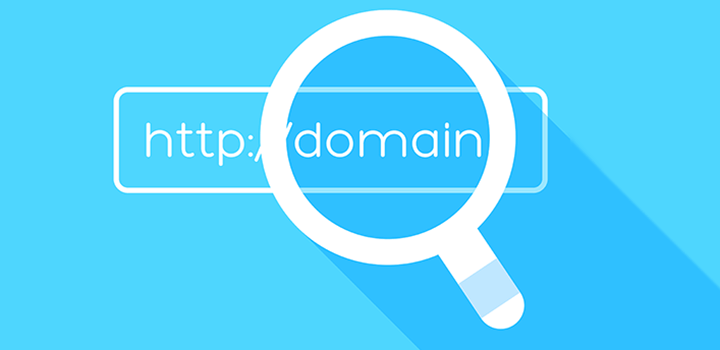Let’s imagine a personal trainer named Jennifer Miller. She teaches classes at a few different gyms and studios in her neighborhood, but she just got certified as a meditation teacher and wants to start her own business as a wellness coach. She needs a website where existing clients can buy training sessions and new clients can find her.
Unfortunately, when she goes to register a domain name, JenniferMiller.com is already taken.
Jennifer’s roommate suggests trying a creative domain name extension that lets her clients know what she does and is easy to remember. That’s how Jennifer ends up getting millerwellness.coach for her new business.
That’s just a fictional example, but maybe your side gig is turning into a startup before your eyes, or maybe you woke up with an amazing idea for a small business or a blog. Now what?
Time to build a home base online to expand beyond Instagram, Twitter, or Facebook and create a custom site to share your vision. One of the first steps? Picking and registering a domain name.
“People come to the process of building a website or creating a blog in different ways,” says WordPress.com Domain Wrangler Wendy Scott. “A lot of times it starts with the germination of an idea and you want to name that idea. A domain is a tangible expression of an idea that you have, and it can be really motivating to get a name that resonates with you.”
Choosing the right domain name
Signing up for a free website on WordPress.com automatically lands you a yoursite.wordpress.com domain name. For some people that will be just fine, says Scott, but if you want to signal to website visitors that you have invested in your brand and that you’re serious about your endeavor, a custom domain is the way to go.
To find the right one, Scott recommends “looking for something that reflects your brand or your idea and trying to keep the domain simple and memorable.”
A quick domain name search on WordPress.com gets you started. But what if your domain name search reveals that the .com, .net, or .org has already been snapped up?
Consider your options for a top-level domain
These web address endings or extensions – everything to the right of the “.” — are known as top-level domains, or TLDs. Endings like .com, .net, and .org are referred to as traditional or legacy TLDs.
“Those TLDs have been around for a really long time so it can be really challenging to find a good name,” says Scott. “By good, I mean something that’s relatively short, unique, memorable, ideally without a bunch of hyphens.”
For example, Joespizza.com has been taken for a while, so a new business might end up with something like joes-pizza-parlor-chicago.com. But that’s a lot of words and hyphens.
If you’re having a hard time finding a .com that resonates with you, it might be a great time to investigate different TLDs.
Generic top-level domains or gTLDs
One type of TLD that has gained popularity over the past decade is the Generic Top-level Domain (gTLD). These include straightforward endings like .blog, .design, .biz, or .film, but also more playful ones like .pizza, .rocks, and .lol. These might make sense if you’re a designer, director, musician, or comedian.
For startups, gTLDs like .tech, .app, or .software are popular. If you’re a small business, gTLDs like .photo, .cafe, .clothing, .yoga, .consulting, or .coach might make sense, like in the example of our fictional wellness coach. For professionals, entrepreneurs or others building a personal brand, .expert, .guru, or .me are popular options. You can check out the full list of WordPress.com’s TLDs or search our domains by keyword.
Country code TLDs or ccTLDs
Domain wordsmiths might also be intrigued by country code top-level domains (ccTLDs) like .ca for Canada, .de for Germany, or .uk for the United Kingdom. If you’re based in a country where ccTLDs are commonly used, you may go for one of these instead of a legacy TLD. If our wellness coach is based in the United States, she could go with jennifermiller.us or jennifermillerwellness.us.
You can also use a ccTLD for clever plays on words. WordPress.com CEO Matt Mullenweg registered his website, ma.tt, using the Trinidad and Tobago country code “.tt.” If you go this route, read the fine print. Not all ccTLDs are easy to access and some ccTLDs don’t fully support private domain registration, so contact information like your address and phone number might be exposed publicly.
Another thing to think about: ccTLDs aren’t subject to the same regulations as gTLDs, meaning that the operators responsible for making the ccTLD available have a lot of latitude to set their own rules and requirements. To get her picturesofthin.gs domain, WordPress.com Editor Michelle Weber had to promise not to publicly denigrate the South Georgia Islands.
“People need to be aware of what those rules are before they commit themselves to a ccTLD,” says Scott.
Geographic TLDs or geoTLDs
GeoTLDs reference specific locations like “.Paris” or “.Miami.” but have fewer rules and requirements than country code TLDs. These hyper-local domains are great for small businesses whose customers are largely found in one city. If our wellness coach is based in Miami, Florida, and does most of her work in person, she could go with a domain like millerwellness.miami.
Why go with a gTLD?
Beyond being the address for your blog’s or business’ home on the web, your domain name helps market your business and communicates with your readers, target audience, or customers.
“I think that there’s a lot of opportunity in the gTLD space,” says Scott. “You have the opportunity to do something interesting like .attorney or .florist — something that sends a very strong signal of who you are and what you do and what your business is about — before the person even comes to your website.”
By registering the domain millerwellness.coach, our business owner, Jennifer, has built her name and the service she provides right into a short and memorable web address.
WordPress.com supports more than 300 top-level domains
When it comes to your business, “there’s obviously a lot of combinations of keywords and TLDs that you can put together,” says Scott. If you have no idea what TLD you want, let WordPress.com’s domain search feature offer you suggestions based on your keywords.
“It’s kind of an iterative process,” says Scott. “If you don’t see anything on the list you like, you can add different keywords or change those around and search again.” You can also scroll through WordPress’ more than 300 TLD options.
(If WordPress.com doesn’t have the TLD you have in mind, you still have options! You can register your domain elsewhere and then transfer it. If you have a paid plan with WordPress.com, the domain transfer is free for the first year.)
Registering your domain name with WordPress.com
If you’re new to WordPress.com, creating an account to build a site also walks you through registering a domain name. When you purchase any WordPress.com paid plan, you get a free domain name for the first year. Afterward, it will need to be renewed on an annual basis.
If you’ve found the perfect domain name but you’re not quite ready to build your site, go ahead and buy it. WordPress.com lets you keep the site private or put up a “coming soon” page until you’re ready to go live, and in the meantime, you’ll know that you have a great domain locked down.
The perks of registering your domain with WordPress.com
Custom Email Addresses
A side benefit of registering a top-level domain with WordPress.com is that you’re also able to create a custom email address like [email protected] or [email protected]. These can give your business or blog an extra mark of professionalism, says Scott. They also help you filter communications from your readers or customers. For example, Jennifer could use [email protected] to separate out appointment scheduling requests from her main email.
Subdomains
Subdomains are an extension of your main web address that can help you organize your site. When you register a custom domain with WordPress.com, you can add subdomains free of charge. For example, if you have an online store as part of your website, you can register store.yoursite.com as a subdomain and create an entirely different layout or experience for visitors to that page. Wellness coach Jennifer could use schedule.millerwellness.coach to create an online booking page for her clients to register for classes and workshops.
Free SSL Certificates
Some TLDs require you to have an SSL certificate. This certificate is a security feature for your website, which encrypts the information shared back and forth between you and your customers. It also acts as a digital ID card, assuring your customers that you are who you say you are.
Depending on where you register your domain, you may have to pay for an SSL certificate separately, but it’s free with domains at WordPress.com (or for domains registered elsewhere and mapped to WordPress.com).
“It is a nice security feature to have,” says Scott. “For small businesses in particular, or anybody engaging in any sort of eCommerce or collecting subscription information an SSL certificate is another signal you’re sending to your customers that you take their privacy and their security seriously with the information that you’re asking them to provide.”
Source: (https://wordpress.com/)











